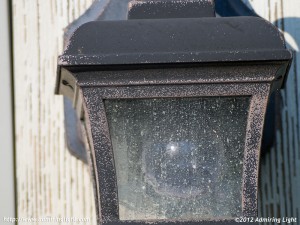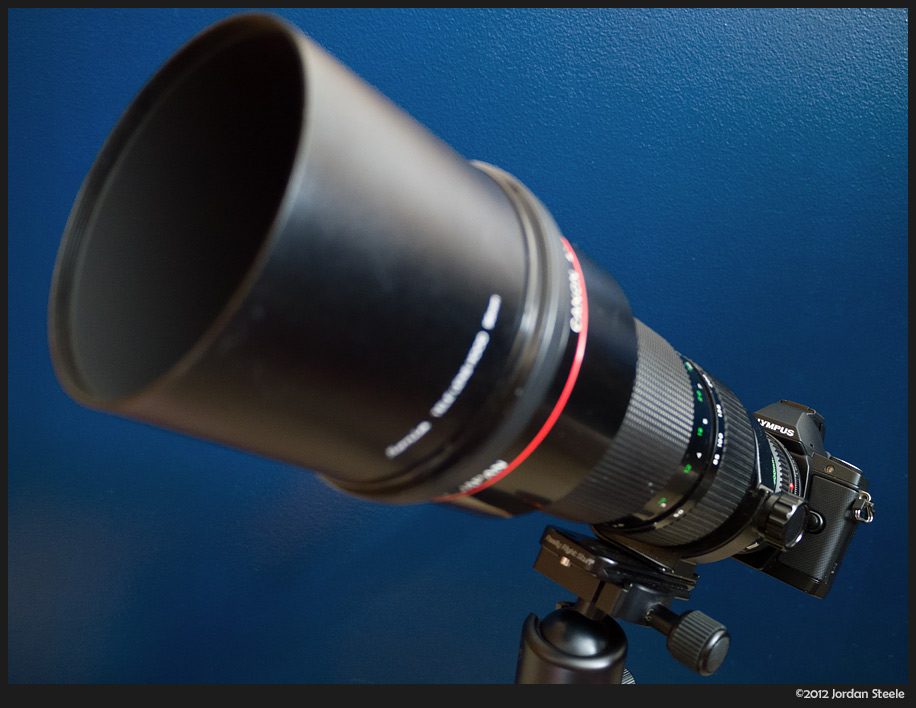
In body IS has been touted as a great stand in for optical IS for many years, However, in practice, these systems often have fallen flat when it comes to stabilizing longer lenses. The IS can’t shift enough to counteract the movement of a really narrow field of view, and as a result becomes largely irrelevant. However, the in-body IS system on the Olympus OM-D E-M5 has proven to be the best implementation of IBIS thus far. However, I was still curious about how well it could perform with really long lenses.
With lenses from wide angle to moderate telephoto, I’ve found the E-M5 to be capable of stabilizing a lens by an average of three to four stops over the typical rule of thumb for ‘hand holdable’ shutter speed, which is 1/(35mm equivalent focal length). For micro 4/3 it’s 1/(2 x focal length). I’ve used up to 300mm lenses with decent stabilization on the E-M5, which is equivalent in field of view to a 600mm lens on full frame. But I wanted to see how it would do with a REALLY long lens.
The Test

I used my Olympus E-M5 and the Canon FD 50-300mm f/4.5L with a Tamron 2x FD teleconverter. This turns the lens into a 100-600mm f/9, which has a field of view equivalent to a 1200mm lens on full frame!
I then took aim at the light on my garage from a distance of about 20 feet, focused with 7x live view and took five shots hand held at each shutter speed in one stop increments from 1/160 second to the nominal ‘handholdable’ speed of 1/1250 second. I did this same test with IS on and with IS off.
I then evaluated the shots at 100%, noting whether the shot was sharp, had relatively small amounts of camera shake (so not sharp, but still with general shapes and outlines present), or heavy blur (visible streaking).
The results are below:
IS OFF:
- 1/160 sec: 0 sharp, 1 mild blur, 4 heavy blur
- 1/320 sec: 1 sharp, 3 mild blur, 1 heavy blur
- 1/640 sec: 0 sharp, 5 mild blur, 0 heavy blur
- 1/1250 sec: 4 sharp, 1 mild blur, 0 heavy blur
- 1/2500 sec: 5 sharp, 0 mild blur, 0 heavy blur
IS ON:
- 1/160 sec: 1 sharp, 3 mild blur, 1 heavy blur
- 1/320 sec: 4 sharp, 1 mild blur, 0 heavy blur
- 1/640 sec: 5 sharp, 0 mild blur, 0 heavy blur
- 1/1250 sec: 5 sharp, 0 mild blur, 0 heavy blur
- 1/2500 sec: 5 sharp, 0 mild blur, 0 heavy blur
So, to sum up: the E-M5’s In body IS system is still effective even with very long legacy lenses. It took until the ‘rule’ handholdable speed to get sharp shots without IS, with 4 out of 5 sharp. However with the E-M5’s in body IS, this drops all the way to 1/320 sec at the same hit mark of 4 of 5 sharp. At 1/640 second and faster, every shot is sharp. I feel confident saying that with proper handholding technique, the E-M5 is good for two full stops of extra handholdability with a lens with a field of view like that of a 1200mm lens on full frame. Impressive!






Leave a Reply